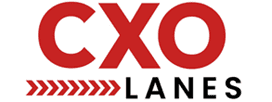In this insightful article, Girish Tilak, Director of Resume Management Consultants (I) Pvt. Ltd., explores the complexities of hiring a professional CEO in a family business. He highlights the challenges, opportunities, and practical solutions for ensuring a smooth leadership transition while balancing family legacy and professional expertise.
Introduction
The decision to hire a professional CEO marks a transformative moment for any family business. However, when the second generation is actively involved—or preparing to be—this decision is layered with complexities. Questions around role clarity, leadership alignment, governance, and public perception arise, making the process both challenging and full of opportunity. This article explores various scenarios, potential challenges, and actionable solutions to help family businesses successfully transition to professional leadership in multi-generational settings.
Scenarios and Challenges
1. Founder-Led Transition with Second-Generation Involvement
· Challenges:
o Ambiguity in Roles: The founder’s reluctance to relinquish control may lead to unclear authority lines between the founder, second generation, and the CEO.
o Second-Generation Resistance: Members of the second generation may feel sidelined, leading to potential friction and loss of motivation.
o Balancing Legacy and Modernity: The new CEO must respect the founder’s legacy while introducing contemporary business practices.
2. Second Generation Driving the CEO Search
· Challenges:
o Lack of Experience: Younger family members may lack the expertise to assess candidates effectively, risking a poor fit.
o Family Alignment: Achieving consensus among family members on the CEO profile and their authority can be difficult.
o Perception Management: The family must address internal and external questions about why the second generation isn’t taking the reins.
3. Second Generation from Renowned Business Schools
· Challenges:
o Academic vs. Practical Experience: Strong academic credentials may not translate to real-world family business needs, leading to unrealistic expectations.
o Role Definition: Ensuring the CEO complements, rather than overshadows, the second generation’s development.
o Cultural Fit: A professional CEO’s leadership style must align with the family business culture while leveraging the second generation’s education.
4. Diversification and Succession Planning
· Challenges:
o Role Clarity Across Portfolios: Clearly defining the CEO’s responsibilities within a diversified business structure.
o Vision Alignment: Ensuring the CEO’s leadership aligns with the family’s long-term goals across multiple business units.
o Second-Generation Readiness: Preparing the second generation to assume strategic roles in other business areas.
Opportunities
· Enhanced Professionalism: A professional CEO brings industry best practices, strategic thinking, and data-driven decision-making.
· Improved Governance: Clearer roles and reporting structures reduce ambiguity and improve accountability.
· Succession Planning: The CEO can mentor the second generation, equipping them for future leadership roles.
· Market Credibility: A professional CEO enhances external perceptions, boosting confidence among stakeholders.
· Conflict Reduction: A neutral CEO reduces family tensions by acting as an objective decision-maker.
Solutions and Practical Insights
1. Role Clarity
· Define specific responsibilities, authority levels, and reporting structures for the founder, second generation, and the CEO.
· Create clear boundaries to avoid overlaps or misunderstandings.
2. Governance Frameworks
· Establish a family council to oversee strategic decisions and align family and business interests.
· Consider creating a board of directors with independent members to provide unbiased guidance.
3. Communication and Perception Management
· Clearly communicate the rationale for hiring a CEO to employees, investors, and stakeholders.
· Highlight the family’s commitment to professionalism and growth.
4. Mentorship and Leadership Development
· Engage the CEO to mentor the second generation, balancing their development with the CEO’s responsibilities.
· Offer leadership training and on-the-job experience to prepare younger family members for future roles.
5. External Expertise
· Engage advisors or consultants with expertise in family business transitions to mediate and provide guidance.
· Partner with executive search firms to identify a CEO who aligns with the business’s strategic goals and culture.
6. Public Relations Strategy
· Proactively address public perception by emphasizing the family’s focus on long-term sustainability and diversification.
· Reinforce that the second generation is actively involved in shaping the business’s future.
7. Second Generation and Diversification
· Develop a clear succession plan, identifying opportunities for second-generation members in new business areas.
· Position the professional CEO as a collaborator rather than a competitor for family leadership roles.
Conclusion
Hiring a professional CEO in a multi-generational family business is a delicate but rewarding endeavor. By addressing challenges head-on, fostering open communication, and implementing clear governance frameworks, family businesses can leverage professional leadership to unlock new growth opportunities while preserving their legacy. Balancing the aspirations of the second generation with the expertise of a professional CEO ensures sustainable success across generations.
